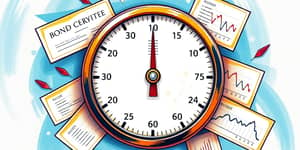
Real estate investors often focus on rental income as the primary measure of success. However, rental yield alone offers an incomplete view of profitability. To thrive in diverse market conditions, you must analyze every dimension of asset performance.
In this comprehensive guide, we will delve into critical metrics such as ROI, cap rate, IRR, and cash-on-cash return. We’ll also explore practical examples, market influences, and strategic tactics to help you make decisions rooted in data and foresight.
By the end of this article, you’ll be equipped with a toolkit for evaluating property assets holistically, ensuring you capture both present cash flows and future appreciation potential.
At its essence, ROI measures investment profitability by comparing the gains you achieve against the costs you incur. The most common calculation is:
While rental yield gauges ongoing income, it fails to account for appreciation, financing arrangements, and variable expenses. Gross yield highlights top-line revenue, whereas net yield factors in property management fees, repairs, insurance, and taxes.
For instance, a property valued at $300,000 generating $24,000 in rent has an 8% gross yield. After subtracting $4,800 in annual costs, the net yield drops to 6%. This clarity on cash flow dynamics is essential before exploring deeper performance metrics.
To move beyond rental yield, investors rely on additional calculations that reveal different facets of performance:
Each metric has its merits. Cap rate simplifies comparison across markets, IRR handles complex timelines with varying cash flows, and cash-on-cash return zeroes in on your actual cash inputs and outputs.
By integrating these measures, you gain a multi-faceted view of property performance, balancing short-term yields with long-term growth prospects.
Seasoned investors often monitor these metrics simultaneously, using a personalized dashboard to track performance over time and compare potential acquisitions on an apples-to-apples basis.
Several external and internal factors can shift your ROI significantly:
For example, renovating a kitchen can boost property value by up to 10%, but an unexpected roof repair may reduce that gain. Evaluating these elements together helps create a realistic profit forecast and build contingency plans for market volatility.
Building a diversified portfolio across residential, commercial, and mixed-use assets can mitigate sector-specific downturns and smooth out overall ROI volatility.
Let’s examine real scenarios where different ROI methods yield distinct insights:
In a cost method example, purchasing a home for $100,000 with $50,000 in renovations and selling at $200,000 yields only 33%. Yet if you only put down $20,000 plus $50,000 in improvements, the out-of-pocket method shows a 71% ROI, demonstrating the power of leveraging debt.
Rental property investors experience similar contrasts. An all-cash purchase with $210,000 total investment generating $18,000 net profit returns 8.57%. Financing the same asset with $45,000 in cash leads to a much higher 18.67% ROI, albeit with mortgage risk and varying cash flow due to interest rates.
Consider a buy-and-renovate scenario: with $500,000 in total costs and a projected sale at $600,000, the ROI stands at 20%. Factoring in two years of rental income could push the annualized IRR above 12%, exemplifying the benefit of combining income and appreciation models.
Combining rental income and appreciation in a single model can further refine long-term performance forecasts, ensuring you capture both streams of value creation.
To enhance overall returns, adopt a blend of value creation, cost control, and market timing:
Balancing immediate cash flow strategies with long-term value creation ensures your portfolio remains resilient, generating steady income while building equity through capital appreciation.
Regular portfolio reviews enable you to rebalance assets, offload underperformers, and redeploy capital into opportunities with stronger projected returns. Maintain robust reserve funds to handle unexpected repairs or vacancy periods without derailing your cash-on-cash targets.
Rental yield offers an initial lens into cash flow, but a complete profitability analysis extends far beyond monthly rent. By measuring ROI through cost and out-of-pocket methods, applying cap rate, IRR, and cash-on-cash return metrics, you unveil the true rate of return and potential risks lurking beneath the surface.
Armed with these insights, you can craft investment strategies that align with your financial goals, risk tolerance, and market outlook. Prioritize total cost and profit analysis, leverage debt judiciously, and implement value-add tactics to amplify gains.
Whether you are scaling a multi-property portfolio or acquiring a single home, this holistic framework guides you to make informed decisions. Embrace a broad view of profitability, stay agile in changing markets, and build a resilient real estate portfolio designed for long-term success.
References













